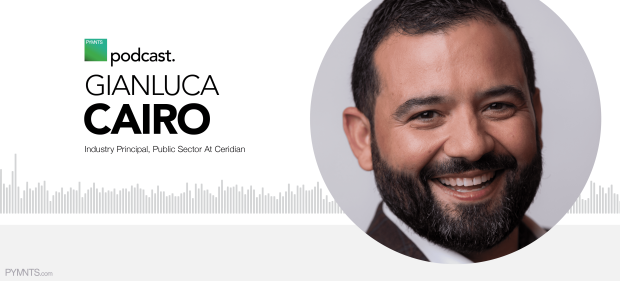Ceridian: Payroll Modernization Readies The Public Sector For Next-Gen Talent

The public sector has a unique challenge ahead. An estimated 40 percent of professionals in the space are getting ready to retire. Clearly, the pressure is on for public entities to rebuild their talent pipelines with the next generation of talent.
To do so, the sector will need to implement modern technologies that drive efficiencies while creating experiences that employees value.
Gianluca Cairo, industry principal, public sector at Ceridian, told Karen Webster in a recent conversation that organizations in this space are at a “significant disadvantage” to the private sector in this regard, thanks to a long-standing under-investment in technology.
These two challenges are intrinsically related, as Cairo explained. In order to prepare for a new wave of workers, the public sector must embrace digitization, particularly when it comes to core business functions. Doing so, he said, will ensure that public entities are positioned to embrace younger professionals’ growing need for the modern workplace that has become commonplace in the private sector.
Putting Intelligence To Work
While budget restraints can make technological investments a challenge for public sector entities, there are drawbacks to relying on legacy infrastructure, from both capability and user experience perspectives.
“When you’re speaking to public sector organization leaders, it quickly becomes clear that to continue to deliver highly valued services to citizens, they need to have their back offices in order,” said Cairo.
That’s also true when it comes to talent attraction and retention. Embracing the cloud with a focus on data protection and security will be instrumental in helping migrate entities’ existing workflows and infrastructure into the digital age, while simultaneously readying for younger professionals to step in.
Within functions like human resources and payroll, digitization can empower public sector entities with employee data for more efficient talent management. The rise of disruptive innovations with artificial intelligence, machine learning, voice-activated technology and mobile solutions “is really critical to putting intelligence at the center of what organizations are trying to achieve,” said Cairo. “Dealing with an aging workforce, attracting new talent and trying to do more with less is enabled by modern technologies.”
Working With Purpose
As the public sector gears up for a new wave of younger professionals, entities must understand that these workers have high expectations for their jobs. As Cairo noted, younger workers need to feel that their work has meaning and value, and stepping into public service is a powerful way to achieve that.
To foster this environment, entities can guide their technological investments and modernization initiatives in payroll and HR to support employee needs.
“It’s a compelling tool in the fight to recruit the next generation of talent,” he said. “For instance, this cohort isn’t satisfied with sitting at their desk, filling out timesheets. They want to be able to use smart tools to excel in their profession.”
The coronavirus crisis has emerged as a major example for prospective talent to understand the value of the public sector. Government agencies in this space have always been under pressure to do more with less, but at a time when most of the economy was shut down, the public sector had to ramp up operations and services.
While resources might be tight, the public sector does have one major advantage over the private sector. Since public entities don’t compete with each other, there’s a tremendous opportunity to embrace an ecosystem of collaboration and cooperation. They can share best practices and support each others’ digital transformation efforts.
Cairo said he’s seen an increase in these efforts, particularly as entities make further progress with modernization investments.
That’s good news for potential employees, too. While the public sector demonstrated during the pandemic the value in stepping up to help the public — a feat that may capture the hearts and minds of younger talent — it’s the digitization of day-to-day functions that will ensure those professionals want to stay.
“People want to do meaningful work that has a positive impact on their communities and the world at large,” said Cairo. “In that regard, the public sector offers a really compelling opportunity for the next generation. It needs to offer that opportunity in a way that allows them to focus on meaningful work and elevate their efforts from administrative tasks.”
